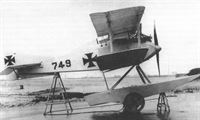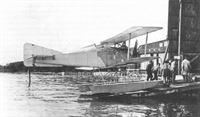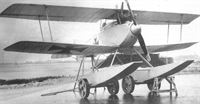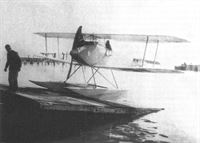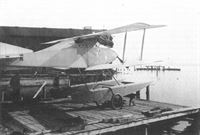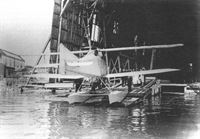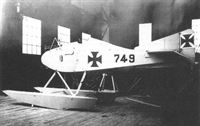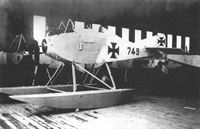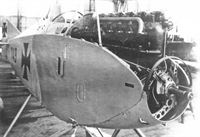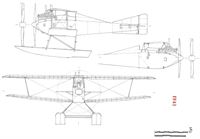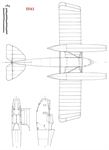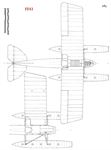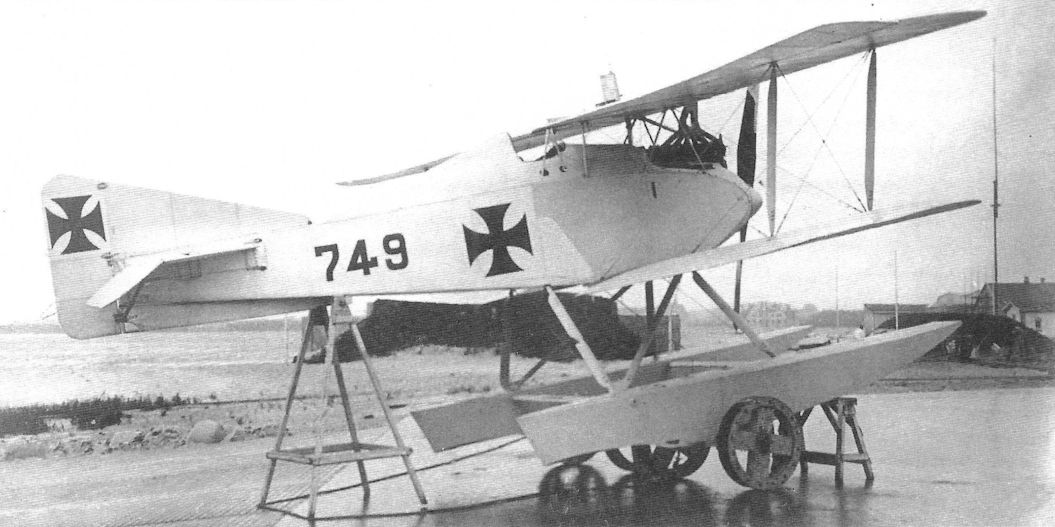
Описание
Страна: Германия
Год: 1916
Fighter
Варианты
- Friedrichshafen - D.I (FF46) - 1916 - Германия
- Friedrichshafen - FF43 - 1916 - Германия
- O.Thetford, P.Gray German Aircraft of the First World War (Putnam)
- W.Green, G.Swanborough The Complete Book of Fighters
- J.Herris German Seaplane Fighters of WWI (A Centennial Perspective on Great War Airplanes 2)
- J.Herris Friedrichshafen Aircraft of WWI (A Centennial Perspective on Great War Airplanes 21)
- Журнал Flight
-
J.Herris - Friedrichshafen Aircraft of WWI /Centennial Perspective/ (21)
FF43 MN 749 was delivered the end of Sep. 1916. Later assigned to Zeebrugge, on 10 Nov. 1916 Ltn.z.S. Schuler downed a Short seaplane while flying it.
-
J.Herris - Friedrichshafen Aircraft of WWI /Centennial Perspective/ (21)
Friedrichshafen's response to the request for a single-seat fighter floatplane with the neat, streamlined FF43 using the 160 hp Mercedes D.III engine. Despite its sleek appearance, only one prototype was built.
The FF43 was a well-streamlined aircraft of good proportions that looked a likely prospect for production. -
J.Herris - Friedrichshafen Aircraft of WWI /Centennial Perspective/ (21)
The FF43 prototype with Marine Number and national insignia applied. Despite remaining a single prototype, the FF43 was assigned to Zeebrugge for operational service. On November 10, 1916, Lt.z.S. Schuler shot down one of two Short seaplanes he encountered during a coastal patrol between Zeebrugge and Dunkirk while flying the FF43. This was probably Short 184 serial 9054 of Ft.Lt. JD Hume & CPO WE Bradley from Westgate who were KIA in North Sea that day.
-
J.Herris - Friedrichshafen Aircraft of WWI /Centennial Perspective/ (21)
The prototype Friedrichshafen FF43 on the ramp of the airship hall at the Friedrichshafen works. The assigned Marine Number, #749, has not yet been applied.
-
J.Herris - Friedrichshafen Aircraft of WWI /Centennial Perspective/ (21)
Fdh FF43 (1916). Only one example of the FF.43 single-seater fighter was built: The engine was a 160 hp Mercedes D.III. The design came from engineer Gehlen and had its first flight on September 8, 1916. It is not known why this type was not built in series, but competing types placed in production had a better rate of climb..
The FF43 under evaluation at the Seeflug-Erprobung (Seaplane Test Facility) at Warnemunde. With better speed than the Albatros W4 and two guns to the W4's single gun (until later production W4 batches), the FF43 seemed to offer as much potential as the W4. However, the FF43 was not chosen for production, perhaps due to a mediocre rate of climb. -
J.Herris - Friedrichshafen Aircraft of WWI /Centennial Perspective/ (21)
The prototype FF43 front view shows it was well streamlined for its time.
-
J.Herris - Friedrichshafen Aircraft of WWI /Centennial Perspective/ (21)
The FF43 at the airship hall before its markings were applied.
-
J.Herris - Friedrichshafen Aircraft of WWI /Centennial Perspective/ (21)
The FF43 at the airship hall before its Marine Number was applied.
-
J.Herris - Friedrichshafen Aircraft of WWI /Centennial Perspective/ (21)
FF43 outside the airship hall before markings were applied.
-
J.Herris - Friedrichshafen Aircraft of WWI /Centennial Perspective/ (21)
The FF43 with wings removed shows details of the float struts.
-
J.Herris - Friedrichshafen Aircraft of WWI /Centennial Perspective/ (21)
The FF43 with wings removed shows details of the float struts.
-
J.Herris - Friedrichshafen Aircraft of WWI /Centennial Perspective/ (21)
The FF43 without engine cowling shows engine details and the right gun mount.
-
J.Herris - Albatros Aircraft of WWI. Volume 3: Bombers, Seaplanes, J-types /Centennial Perspective/ (26)
Albatros W.4 prototype MN 747 with visiting dignitaries in the background. Behind MN747 the tail of MN749 can be seen at left. MN749 was the Friedrichshafen FF43 that was a competitor for single-seat floatplane fighter orders from the Navy, but only one was built. Despite remaining a single prototype, the FF43 was assigned to Zeebrugge where it scored a victory. (Peter M. Bowers Collection/Museum of Flight)
Другие самолёты на фотографии: Albatros W.4 - Германия - 1916
-
W.Green, G.Swanborough - The Complete Book of Fighters
The FF 43 float fighter evaluated under operational conditions in the North Sea from October 1916 by the Seeflugzeug Versuchs Kommando.
-
J.Herris - Friedrichshafen Aircraft of WWI /Centennial Perspective/ (21)
Friedrichshafen FF43 SVK Drawing
O.Thetford, P.Gray German Aircraft of the First World War (Putnam)
Friedrichshafen FF 43
This neat little single-seater was designed for seaplane station defence duties, but only a single machine (No. 749) was built. It was delivered in June 1916. Engine, 160 h.p. Mercedes D III. Span, 9.92 m. (32 ft. 6 5/8 in.). Length, 8.5 m. (27 ft. 10 3/4 in.). Height, 3.39 m. (11 ft. 1 1/2 in.). Area, 31 sq.m. (335 sq.ft.). Weights: Empty, 798 kg. (1,756 lb.). Loaded, 1,078 kg. (2,372 lb.). Speed, 163 km.hr. (101.875 m.p.h.). Climb, 1,000 m. (3,280 ft.) in 6 min., 2,000 m. (6,560 ft.) in 12 min. Armament, two Spandau machine-guns forward.
Описание:



